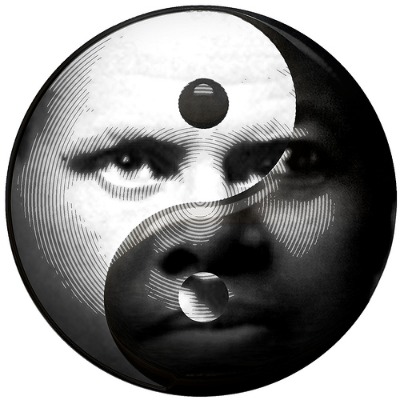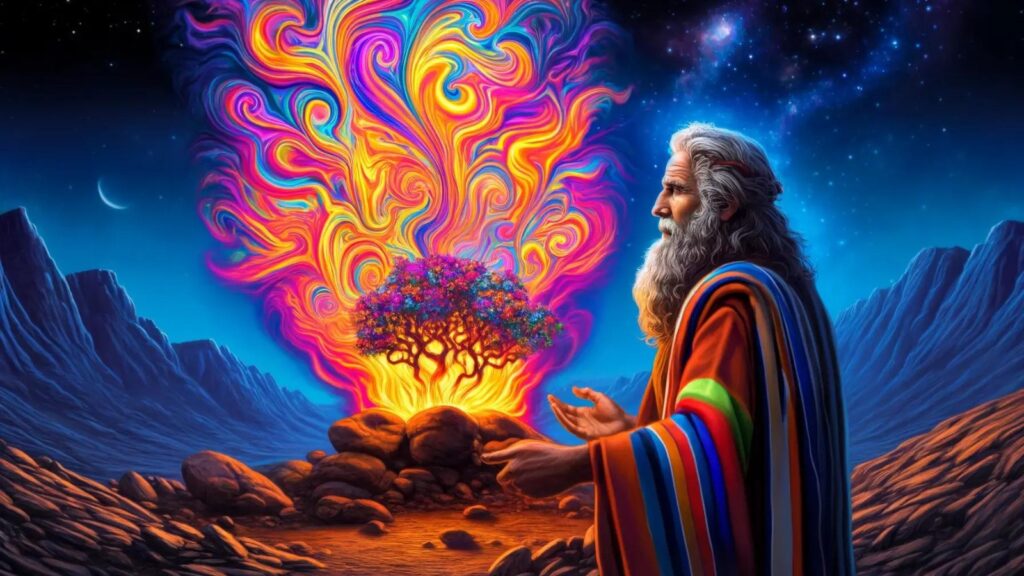The following is excerpted from The Secret Tradition of the Soul, recently released by EVOLVER EDTIONS/North Atlantic Books.
The Negative Way and the Affirmative Way are extreme examples of two basic human constituents or tendencies. There have been many ways of characterizing them. For example, male and female, intellectual and emotional, consciousness and the unconscious, yang and yin, left brain and right brain, sun and moon, unity and multiplicity, Classical and Romantic, Apollonian and Dionysian, light and dark, and so on. Each pair is a metaphor for the twofold tension in our lives or selves. The terms I have chosen to express this tension are “spirit” and “soul,” because they are large, resonant terms with religious connotations. They are not to be understood as substances or even as theological concepts, but rather as symbols.1 As such they cannot be exactly defined. They can only be grasped elliptically, by the associations they evoke.
The vision of Nature and the vision of Eros belong to the Affirmative Way. They are visions of what is created. They are, so to speak, soul visions.
The vision of God belongs to the Negative Way. It is a vision of the Creator, or of the Source. It is a spirit vision, which always desires unity and rejects soul’s vision of multiplicity.
Spirit is expressed in metaphors of ascent, height, and light. He flies and soars like Peter Pan or Icarus. He longs for transcendence, to rise above the world. Quickly, arrow-straight, he climbs the holy mountain of self-denial and prayer toward Illumination; or the ladders of Reason toward Enlightenment. Pure reason, pure philosophy, pure mathematics, pure light, pure love … Spirit is a puritan, his goal the pure life of the ascetic monk in his cell or the pure scientist in his hygienic laboratory. He turns his back on what he sees as soul’s contamination and confusion.
Soul is expressed in metaphors of descent, depth, and darkness. She favors the Underworld and the circuitous route. She is not transcendent but immanent, lying hidden within the world. Slowly, meanderingly, she follows the downward spiral of Imagination toward its dark wisdom. She prefers the twilight to the light, where things mingle and worlds intersect. She is suspicious of “purity,” knowing that reality is complex and muddy.
Spirit resents the way that soul is always trying to hold him down or entangle him just as he has leaped out of bed to make a fresh start, wipe the slate clean, embark on a big new adventure. Soul brings him down with the residue of an anxiety dream or clips his wings with a sudden fit of peevishness or mood of pointlessness. Her images and urges, memories and fears, farts and fits of giggles are always breaking in on his high-minded, solemn meditations. His important work is interrupted, as mine is now, by stomach rumblings and daydreams. He strives to bring soul to heel, control her desires, empty out her imagination, make her forget her dreams; but the more puritanically he denies these daimons the more strongly they return, ever more distorted, like the sexy demons who tempted poor St. Anthony in his desert cave.
Spirit wishes to die literally to the world, shedding all its images and its attachments in the pure, clean, empty air of the desert and mountaintop; soul dies to the literal world, finding truth and meaning in the depths of all images and attachments.
Spirit is humorless. If he makes a joke, it is of the “cosmic” variety–that is, not funny. Soul adores every kind of joke, from the finest wit to the most grotesque buffoonery.
Soul says that the basis of all reality is image, myth, story, fiction–in short, imagination. Spirit says that all this is unreal, illusory, against reason. He prefers “facts,” preferably “hard” facts. If a thing is not literal, it is not real. Soul replies that it is literalism that is not real but only a product of spirit’s literalistic perspective, like the ascents he turns into literal mountain climbing or the Otherworld journeys he turns into literal pilgrimages, while she stays put in Imagination’s gleaming caverns. Facts, she says, are only spirit’s fictions.
Sharp-edged spirit always wants things cut-and-dried, black and white, either-or; soul says that things are not like that: they are always ambiguous, paradoxical, both-and. Spirit has big ideas that he insists are brand new. Soul says that there are no new ideas, only old myths recast in modern garb, which we need new insight to see through.
Spirit resists disease and flees death; soul sees disease as one of her treasured manifestations, and death as her own proper realm. She savors death, whose bitterness is an initiation; spirit leaps over death and its darkness to emphasize the light of rebirth.
Soul is poetry; spirit, prose. Books with “soul” in the title are usually about, and by, spirit–and full of abstractions and generalities about the delights of Light, Love, Oneness, God, Energy, Consciousness. Our difficulty in staying awake when reading such books is because of soul’s desire that we should return to her realm of dreams and images, or pick up a book with a good story in it. She closes our eyes against the mystic dazzle; she closes our ears against the banality of transcendence, against large pronouncements, against the preachy platitudes of would-be gurus or of “channeled” spirits, angels, and space brothers. “Glory be to God,” says soul (through G. M. Hopkins) “for dappled things,” whatever is “counter, original, spare, strange; / Whatever is fickle, freckled (who knows how?).”2 She regards spirit much as Virginia Woolf regarded Lowes Dickinson: “Always live in the Whole, Life in the One; always Shelley and Goethe, and then he loses his hot-water bottle; and never notices a face or a cat or a dog or a flower, except in the flow of the universal.” For the trouble is, said Woolf, “One can’t write directly about the soul. Looked at, it vanishes; but look at the ceiling, at Grizzle, at the cheaper beasts in the zoo which are exposed to walkers in Regent’s Park, and the soul slips in.”3
Spirit wants to commandeer soul for his own purposes–progress, growth, improvement. He turns soul’s playful self-sufficiency into practical self-help. Indeed, our passion for self-help is underpinned by that muscular Protestant work ethic, replete with guilt, that was so admirable in the Pilgrim Fathers and still sees America as its spiritual home. Soul sees spirit’s rigorous regimes of meditation as a form of repression, denying her infinite variety of images.
Spirit loves humanity but, unlike soul, is less interested in people. He is high-minded and serious, looking down on soul’s love of gossip, rumor, and mythmaking. He is suspicious of appearances, disapproving of makeup and fancy hairdos and stylish shoes. He does not see that soul’s gossip and chat are about relationship and personal connections; her liking of personal adornment, an expression of her concern with Beauty, which spirit always tries to “get behind,” to get to Truth.
It is spirit that always postulates something “higher” “behind” the image, such as a noumenon behind a phenomenon, a god behind a daimon, or one God behind the gods. But soul says that this is not literally so. The sense of “behindness” is built into soul’s vision, supplying her sense of dimension, mystery, and depth. So, too, the structures and hierarchies we are so attached to are spirit’s impositions on soul’s flow. We are allowed hierarchies, as
Plotinus is allowed his system of emanations and the evolutionists are allowed their vision of a great chain of being, provided only that we use them as tools, as ways of seeing, rather than asserting that they are the case.
It was this perceived rigidity that caused W. B. Yeats temporarily to “mock Plotinus’ thought and cry in Plato’s teeth,” as he writes in his poem “The Tower”; but, later, he recanted. “I forgot that it is something in our eyes that makes us see them as all transcendence. Has not Plotinus written: ‘Let every soul recall, then, at the outset the truth that soul is the author of all living things, that it had breathed the life into them all, whatever is nourished by earth and sea, all the creatures of the air, the divine stars in the sky; it is the maker of the sun; itself formed and ordered this vast heaven and conducts all that rhythmic motion–and it is a principle distinct from all these to which it gives law and movement and life.…'”4
To spiritual, hierarchical thinking, the daimons are at best the missing links between this world and the world “above.” But to soul they are the very fabric of a single world that shifts shape–shows us many different aspects, including the spiritual and the material, according to whatever perspective, whatever god, we are looking through.
Spirit is a Utopian, always flying off to forge a new future, always plotting a social program to usher in the New Jerusalem. He cannot wait to forget the past, leave home, shake off family ties and old traditions. Soul is an Arcadian, always wishing to return to the golden age, always waiting to reinstate the conditions of Eden.5 She loves memory, the past, the ancestors, and old customs. She likes the unchanging cycles of seasons, festivals, and sagas.
Whereas spirit sees the past as a static, backward, primitive, superstitious, and unhygienic dark age, soul sees it as a nourishing wellspring of sacred culture, social harmony, and right relations with Nature. In our secular culture soul returns–if the British TV ratings are anything to go by–as an interest in gardens, old buildings, antiques, archaeology, genealogy, and Nature programs.
When the poet Kathleen Raine heard two young girls singing as they brought in the washing on the Scottish island of Eigg, with no accompaniment other than birdsong, the sound of sheep, and of the sea–no modern sound–she remarked: “it was not so much the past that we seemed then to enter, but the permanent, the enduring norm, the familiar.”6 And this, too, is part of the joy of the vision of Nature, that it seems to be the way things should be–and are, if we but open our eyes and hearts to what is not beyond this beautiful world but enfolded within it.
One and Many
If I am giving the impression that spirit and soul are opposed to each other, it is not necessarily so. It is the result of the preponderantly “spirit” perspective of our culture, founded on a monotheism that tends to polarize–whether spirit and soul, Affirmative and Negative, this world and the next, angels and demons, or spirit and matter. Such oppositions have been carried over into modern society, where subject is at odds with object, mind with matter, fact with fiction, and so forth.
A wholesome life, it seems, is made out of holding spirit and soul together, in tandem and in tension. Religiously speaking, this means balancing the One and the Many–one God with many gods. All the great Renaissance magi, from Ficino and Pico, to John Dee, were Christian polytheists. Ficino, for example, “worshipped God simultaneously both beyond and within Creation.” For him, “the world was ‘full’ of a god who transcends it: Iovis omnia plena [all things are full of Jupiter].”7 Their faith was biblical and monotheistic, but their theology, as it were, came from Plato and Plotinus. The Romantic poets too were usually Christian; but they also were drawn to pagan Neoplatonism. William Blake’s work is the paradigm for Christian polytheism. They all managed to resist monotheism’s tendency toward superiority and its perennial wish to break free from soul’s manyness. Even Iris Murdoch, who as a novelist as well as a philosopher should have known better, asserts that “theological mythology, stories about the gods, creation myths and so on, belong to the realm of image-making and are at a lower level than reality and ultimate religious truth, a view continuously held in the East, and also in Western mysticism: beyond the last image we fall into the abyss of God.”8
Soul might well expostulate: “But, but … ‘abyss’ and ‘God’ are also only images in my vast treasure-house of images. Indeed, I am myself the abyss–for I am, as Heraclitus says, fathomless–in which the image of God is contained.” Recognizing this truth, perhaps, the Protestant theologian Paul Tillich was forced to postulate, in the fashion of pure spirit, a “God above God”;9 a God, that is, who is unknown and unknowable, beyond any image of God we can conceive of. But is this not also an image …? Must there not then be a God above God above God …?
In other words, there is no monotheism that is not besieged by soul’s fragmenting daimons; and there is no polytheism that does not acknowledge, however dimly, some overriding deity,10 whether it is Zeus among the Greek gods, Ra among the Egyptians, Wakan
Tanka among the Native Americans of the Plains, the “Spirit of the Forest” among the Pygmies, or the shadowy creator god of the Eveny reindeer herders, Hövki. Even Plato’s Form of the Good can be seen as the assertion of an impersonal unity over against the many personified gods of Homeric polytheism, rather like the way the Buddha emptied out the Hindu deities into the “void” of Nirvana. However, neither of these banished the gods altogether as jealous Jehovah did.
In his desire to break free of soul, spirit turns his back on her and flees as if from his own shadow. But if he faces his own shadow he finds his own reflection. For when soul is working together with spirit, she contains and defines him, slows him down and fleshes him out, gives him bulk and substance, roots his airy ideas in concrete images, brings imagination to his single-mindedness, encourages him to turn things over in his mind, to brood and gestate before bringing forth. Above all, soul reflects; and spirit can only know his own truth through her.
Reciprocally, spirit invigorates soul, who is tempted to remain in the valley of dreams, to hide in fetid mists, to stagnate in the past11–her love of beauty degenerating into an empty aestheticism, her polytheism surrendering to fatalism. She needs spirit’s fire and wind to burn away her haze and give her liftoff. She needs his lightning strike to germinate her imaginative fertility, his inspiration to breathe zest into her. In spirit, soul sees her own beauty.
Thus soul and spirit can be grasped only in relation to each other. I have been opposing them in order to bring out their differences; but opposition is only one way in which they relate, albeit the way favored by modernity. Really, they are forever intertwined, mutually mirroring. Whatever is said about the one is necessarily from the standpoint of the other, like Jung’s anima and animus. Jung called this pairing a syzygy. It is a term taken from the conjunction of celestial bodies in astrology. Our imagination is bounded by syzygies. We can only imagine in pairs, like the tandems of our mythic tales: twins, brothers and sisters, heroes and damsels, heroes and dragons, fathers and daughters, mothers and sons, and so on. The union of consciousness and the unconscious in the Self is symbolized in alchemy by a hermaphrodite. The usual symbol of the union of soul and spirit is, of course, simply marriage–for every Dante a Beatrice, for every Psyche an Eros. All the Elizabeth Bennets get their Mr. Darcys. Every soul is secretly a princess with her own Prince Charming.
This implies that this book should be as much a study of spirit as it is of soul. I expect you have noticed that it already is, because all descriptions or “definitions” of soul are reflections of one or another perspective of spirit; or, to put it slightly differently, soul’s own reflections in spirit’s mirror.
Nowadays the outlook of spirit is most often carried by what we call the ego. And it is this archetypal “spirit” perspective that I look at in the next chapter. But before I do this I will append a cautionary tale about the fate of daimons who fall into the hands of unbridled spirit.
The Flaying of Marsyas
Marsyas was a daimon–a satyr, in fact–who stumbled one day across a flute that, unknown to him, had been cursed by Athena. He went about Phrygia in the retinue of Cybele, one of the great Middle Eastern goddesses, delighting the peasantry with his playing. It was soon rumored that even Apollo himself could not make such marvelous music. This made Apollo angry. He invited Marsyas to meet him in a musical contest, the winner of which could choose whatever punishment he wished for the loser. Marsyas foolishly agreed. The Muses, who were elected to judge the contest, were equally delighted by both contestants. So Apollo challenged Marsyas to do as he did, which was to turn his instrument upside down, and play and sing at the same time. This was quite easy for Apollo to do with his stringed lyre, but impossible for Marsyas to do with his flute. The Muses had no choice but, in spite of the trick, to declare Apollo the winner–whereupon the god took a cruel revenge on the satyr: he flayed Marsyas alive and nailed his skin to a tree.
Now, this may be a reference to the ritual removal of an animal skin from a satyr or silenos, a man who danced in a Dionysian rite while wearing a goatskin and horse’s tail. But it also tells us a lot about unbridled Apollo. Although there are many kinds of spirit, “more and more the notion of ‘spirit’ has come to be carried” (James Hillman tells us) “by the Apollonian archetype, the sublimations of higher and abstract disciplines, the intellectual mind, refinements and purifications.”12 A-pollo means “not many,” and so “far-seeing” Apollo is the god of unity. As we have seen, he is also the god of science, who, unrestrained by the influence of Hermes or Dionysus, may lapse into monomaniacal scientism, which feels it is above soul–but not above tampering with the facts in order to defeat its competitors; which hates and, I dare say, fears soul’s irrational eruptions of goaty daimons, playing their maddening Dionysian flutes–and wishes to flay them alive.
© 2011 by Patrick Harpur. Reprinted by permission of publisher.
Teaser image courtesy of DonkeyHotey, Creative Commons license.
1. Some of the following distinctions between soul and spirit are indebted to Hillman (1975) pp. 67-70 and Hillman (1989) pp.
57-69.
2. Hopkins p. 31.
3. Quoted in “A Consciousness of Reality” in Auden (1973) p. 415.
4. Yeats (1967) p. 533.
5. For the distinction between Arcadia and Utopia, Eden and the New Jerusalem, see “Dingley Dell and the Fleet” in Auden (1964) pp. 409ff.
6. Raine (1991) pp. 105-6.
7. Quoted in Wind pp. 63-64.
8. Murdoch (1993) p. 318.
9. Tillich pp. 180-83.
10. See Miller pp. 27-28.
11. Hillman (1989) pp. 67-68.
12. Hillman (1975) p. 69.









